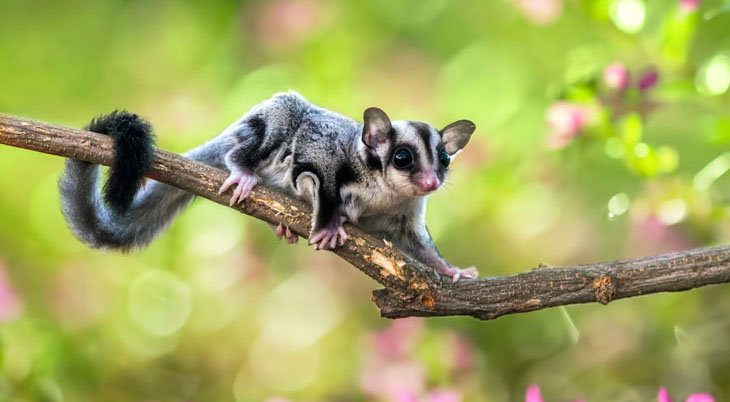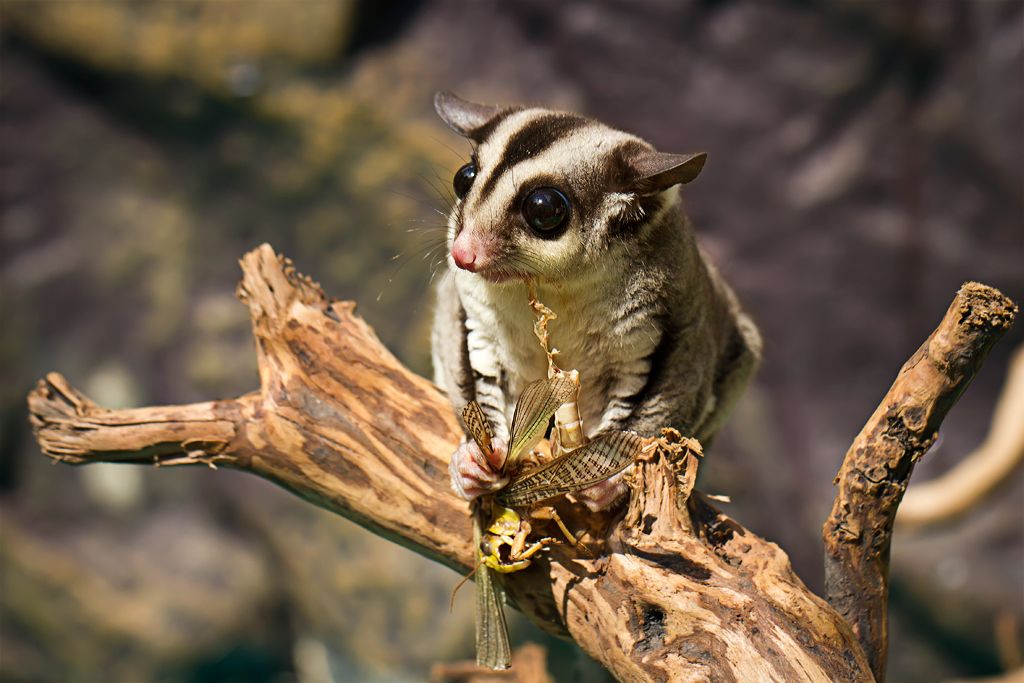Table of Contents
ToggleIntroduction
Choosing the right exotic pet entails careful consideration of various factors, from their unique characteristics to the specific care they require. Chinchilla Vs. Sugar Glider? Among the myriad options, chinchillas and sugar gliders stand out as popular choices. Each bringing its charm and distinct qualities to the realm of exotic pet ownership. As prospective owners navigate the decision-making process, understanding the differences between chinchillas and sugar gliders becomes essential. From their physical traits to their social behaviors. This comparison aims to shed light on the contrasting features of chinchillas and sugar gliders. Assisting individuals in making informed choices that align with their preferences and lifestyles.
Physical Characteristics
Physical characteristics play a significant role in distinguishing between chinchillas and sugar gliders, two charming exotic pets with distinct features and adaptations.
Chinchillas
Soft Fur and Distinctive Physical Features: Chinchillas are renowned for their incredibly soft fur, which is one of the densest and finest among all land mammals. The fur comes in various colors, including standard gray, beige, black velvet, and white mosaic. This plush coat not only contributes to their aesthetic appeal but also serves as insulation. Against their native high-altitude, cold mountain environments. In addition to their soft fur, chinchillas have distinctive features such as a compact. And round body, large eyes, and vibrantly large ears.
Compact Size and Large Ears: Chinchillas are relatively small, with an average body length of about 9 to 15 inches and a bushy tail that adds to their overall length. Despite their diminutive size, they possess a robust build and powerful hind limbs. Adapted for jumping and climbing in their natural rocky habitats. Large, expressive ears aid in their keen sense of hearing, allowing them to detect potential predators and navigate their surroundings effectively. These characteristics reflect the adaptability of chinchillas to their mountainous habitats, where agility and alertness are essential for survival.
Sugar Gliders
Gliding Abilities and Unique Physical Traits: Sugar gliders are distinct for their remarkable gliding abilities, made possible by a patagium—a membrane that stretches from their wrists to their ankles. This adaptation allows them to glide effortlessly between trees in their native habitats, aiding in navigation and evading predators. The patagium is a striking physical trait that sets sugar gliders apart from other small mammals. Additionally, sugar gliders have large, expressive eyes that contribute to their nocturnal lifestyle, enhancing their low-light vision for activities during the night.
Size and Nocturnal Adaptations: Sugar gliders are generally smaller than chinchillas, with an average length of 8 to 12 inches, excluding their tail. Their size is conducive to their arboreal lifestyle, allowing them to move swiftly through the trees. Sugar gliders are primarily nocturnal, meaning they are most active during the night. Their large eyes, adapted to low light conditions, enable them to navigate in the dark. The combination of their size, gliding abilities, and nocturnal adaptations reflects the specialized nature of sugar gliders for life in the treetops of their natural habitats.
Social Behaviors
Understanding the social behaviors of chinchillas and sugar gliders is essential for providing optimal care and ensuring the well-being of these charming exotic pets.
Chinchillas
Social Nature and Preference for Companionship: Chinchillas are inherently social creatures, displaying a strong preference for companionship. In the wild, they live in colonies, forming tight-knit social groups. This social nature is also evident in captivity, where chinchillas thrive when kept in pairs or small groups. Solitary chinchillas may experience loneliness and stress, affecting their overall health and behavior. Owners are encouraged to provide the opportunity for social interaction. Whether by having same-sex pairs or groups, to fulfill their need for companionship.
Group Living Tendencies in the Wild: In their native habitat, chinchillas engage in various social behaviors within their colonies. These behaviors include grooming, playing, and vocalizations to communicate with one another. Chinchillas are highly communicative animals, and they use vocalizations such as chirps and barks. To convey emotions or alert group members to potential threats. Replicating a social environment in captivity through proper introductions and monitoring group. Dynamics is crucial for fostering a healthy and contented chinchilla community.
Sugar Gliders

Strong Bonding with Their Kind: Sugar gliders exhibit a remarkable capacity for forming strong bonds with their kind. In the wild, they live in family groups, forming close-knit relationships with their fellow sugar gliders. This strong bond is crucial for their survival, contributing to cooperative behaviors such as grooming, foraging, and caring for offspring. In captivity, sugar gliders are generally happiest when kept with at least one companion of their species. The companionship of other sugar gliders helps alleviate stress and ensures the fulfillment of their social needs.
Importance of Social Interaction and Bonding with Humans: While sugar gliders form strong bonds with their kind, they also possess the ability to bond with humans. Regular social interaction and bonding activities are essential for fostering a positive relationship between sugar gliders and their human owners. Bonding involves spending quality time with the sugar gliders. Allowing them to become familiar with their owner’s scent, voice, and touch.
Dietary Needs

Meeting the dietary needs of chinchillas and sugar gliders is crucial for maintaining their health and well-being. These exotic pets have specific nutritional requirements, and understanding their dietary preferences is essential for responsible ownership.
Chinchillas
Primary Diet of Hay and Pellets: Chinchillas are herbivores with a primary diet consisting of high-quality hay, such as timothy hay. Hay provides essential fiber for proper digestion and helps maintain dental health by encouraging natural chewing behavior. Alongside hay, chinchilla-specific pellets contribute necessary nutrients, vitamins, and minerals to their diet. It’s crucial to choose high-fiber pellets specifically formulated for chinchillas, avoiding mixes with seeds or treats that can be high in sugar and fat.
Limited Variety of Fruits and Vegetables: While chinchillas can consume small portions of certain fruits and vegetables, it’s important to provide them in moderation due to the chinchilla’s sensitive digestive system. Leafy greens like kale and parsley can be offered, but high-sugar fruits and vegetables should be limited or avoided to prevent digestive issues.
Sugar Gliders
Omnivorous Diet Including Nectar, Fruits, and Insects: Sugar gliders are omnivores with a varied diet that includes nectar, fruits, vegetables, and insects in the wild. In captivity, their diet should be balanced and mimic their natural intake. A staple in their diet is a specialized commercial diet formulated for sugar gliders, providing the essential nutrients they need. Fresh fruits, vegetables, and occasional insects can be offered as supplements.
Balanced Nutritional Needs and Potential Vitamin Deficiencies: Maintaining a balanced diet is crucial for sugar gliders, as deficiencies can lead to various health problems. Calcium and phosphorus ratios should be carefully considered to prevent metabolic bone disease. Vitamin deficiencies, especially in vitamin A and calcium, can result in issues such as hind limb paralysis.
Conclusion
In the diverse world of exotic pets, the choice between a chinchilla and a sugar glider ultimately boils down to individual preferences, commitment to care, and lifestyle considerations. Chinchillas, with their plush fur and gentle demeanor, appeal to those seeking a small, charming companion that thrives in a well-structured and spacious environment. On the other hand, sugar gliders, with their gliding abilities and social nature, captivate those looking for an interactive and nocturnal companion willing to invest time and effort into building strong bonds.







